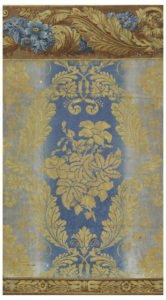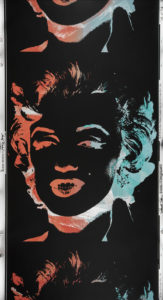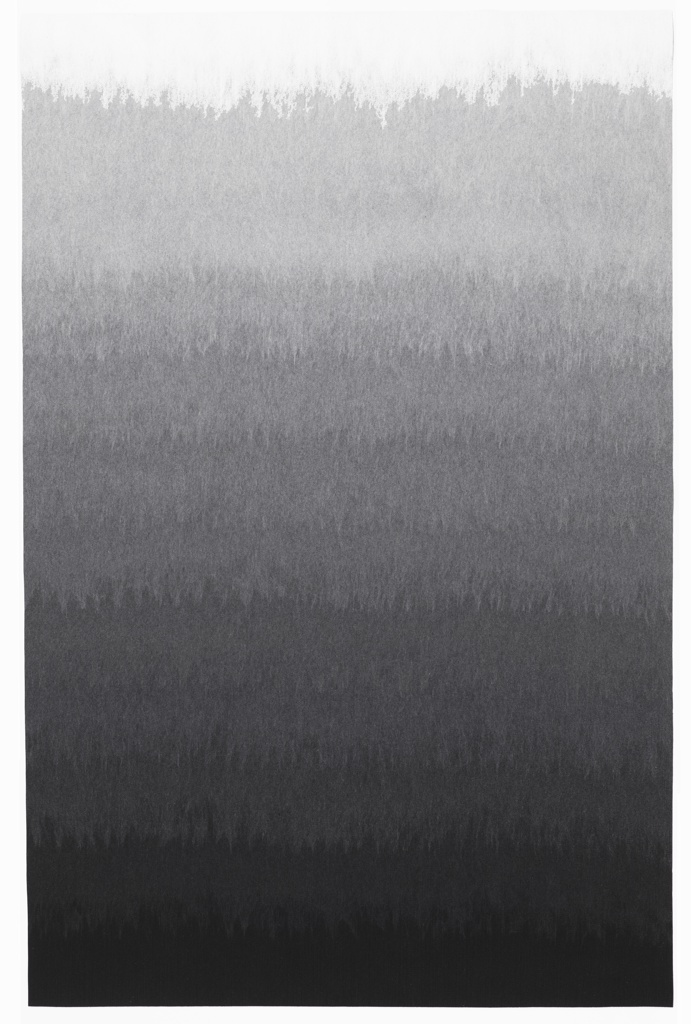This is a textile designed and constructed for direct application to the wall. Made in the lamontage process, the design is an ombre pattern that shades from deep black through shades of gray, to white. While this style has certainly made a comeback today it has old roots in the wallpaper field, and I was excited to see it produced in this material and process.
The earliest wallpaper examples of this “shading” are the irise or rainbow papers first produced by the French wallpaper company Zuber in 1819. This involved the application of pigment and blending directly on the paper. This can be seen in the left image, below, by an unknown manufacturer. Later, studios mimicked this effect with machine printing rollers and silk screens, while today you can find beautiful examples that are digitally printed. The middle image shows the screen print Marilyn Monoprint by Flavor Paper that involves manipulating pigments on the screen before printing; The right image shows the digital print Aurora Ray by Calico Wallpaper. I always love discovering how designs evolve or get revived over time so was happy to find Ombre produced by Liora.



This was produced using Liora’s patented needle punch process called lamontage which is based on an ancient technique involving barbed needles repeatedly passing through fibers into a fabric support that binds the fibers together. The fibers are laid in place and the pattern is set using a hand punch in Manne’s New York studio. After the pattern is completed the fabric is sent to a large factory where it is run through a commercial high-speed, high density needling machine which securely and permanently interlocks the fibers to the base fabric. This process also blends the different color fibers together. Another sign of modern technology, after the fabric passes out of the machine it is coated with a binder for durability and treated with nano silver particles to make it antimicrobial. So the design continuum of ombre wallcoverings continues. Where will it go next?
